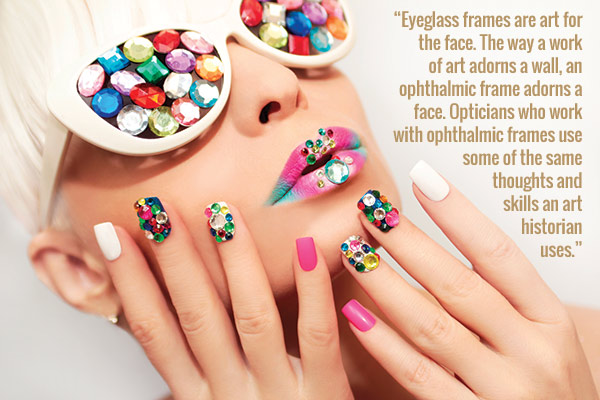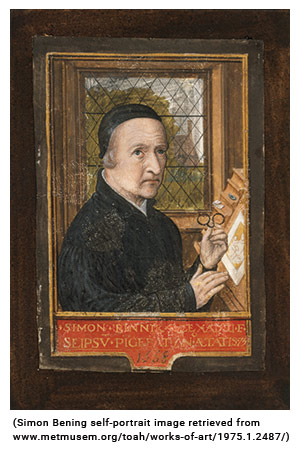
By Maryann Santos
 Do you know when a thought pops into your head and you just run with it not knowing why it’s there, but you stay with it? Recently, I was thinking about the connection between eyewear and art. Artistic trends come and go, and are influenced by a variety of sources reaching as far as music, theatre, literature, politics, nature, emotions and feelings, personal experiences, science and fashion. While pondering the connection between art and eyewear, I thought of one of our students who has her bachelor’s degree in art history and is pursuing an associate’s degree in vision care technology. I imagined art history blending with opticianry, like colors on a palate. Art historians wonder about who created, painted and designed a work of art. They examine the time period, what the object is made of, and how the work of art is or was used. While studying art and art history, one develops an eye for perspective, color and detail.
Do you know when a thought pops into your head and you just run with it not knowing why it’s there, but you stay with it? Recently, I was thinking about the connection between eyewear and art. Artistic trends come and go, and are influenced by a variety of sources reaching as far as music, theatre, literature, politics, nature, emotions and feelings, personal experiences, science and fashion. While pondering the connection between art and eyewear, I thought of one of our students who has her bachelor’s degree in art history and is pursuing an associate’s degree in vision care technology. I imagined art history blending with opticianry, like colors on a palate. Art historians wonder about who created, painted and designed a work of art. They examine the time period, what the object is made of, and how the work of art is or was used. While studying art and art history, one develops an eye for perspective, color and detail.Eyeglass frames are art for the face. The way a work of art adorns a wall, an ophthalmic frame adorns a face. Opticians who work with ophthalmic frames use some of the same thoughts and skills an art historian uses. When an ophthalmic frame representative comes into the dispensary, the optician enters the world of examiner. We examine the varied shapes, designs, textures and colors of the pieces. Ophthalmic frames, like art, run the gamut from classic and traditional to bold, edgy and contemporary. Most optical shops have displays that are similar to a gallery. We have come a long way from the Shuron Ronsir frame.
Art aficionados have their own unique taste when it comes to art, as there are countless forms and materials. There are hundreds of genres of art from abstract to urban.
The materials used by artists and ophthalmic frame designers overlap. Some materials we share are metal, titanium, wood, plastic, aluminum, copper beryllium, carbon fiber and gold.
According to the Metropolitan Museum of Art, 16th-century painter Simon Bening painted himself on tempera and gold leaf on parchment holding a pair of spectacles in 1558. This artist was so proud of his spectacles that at the age of 75 he decided to do a self-portrait!
Artists frame their works of art, and we frame our works of art—our patients.












